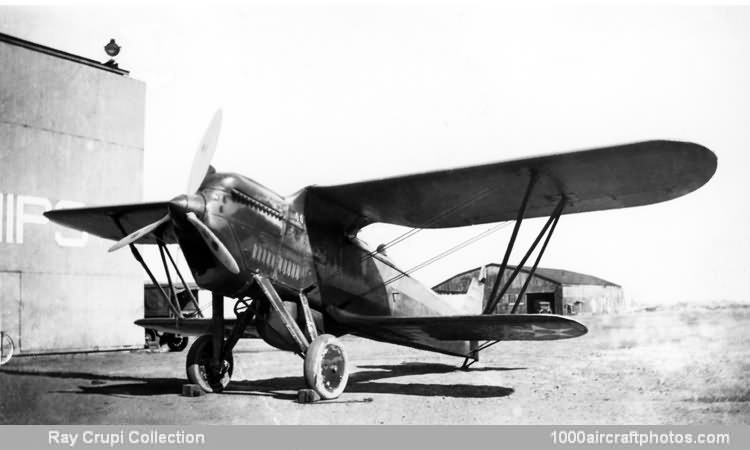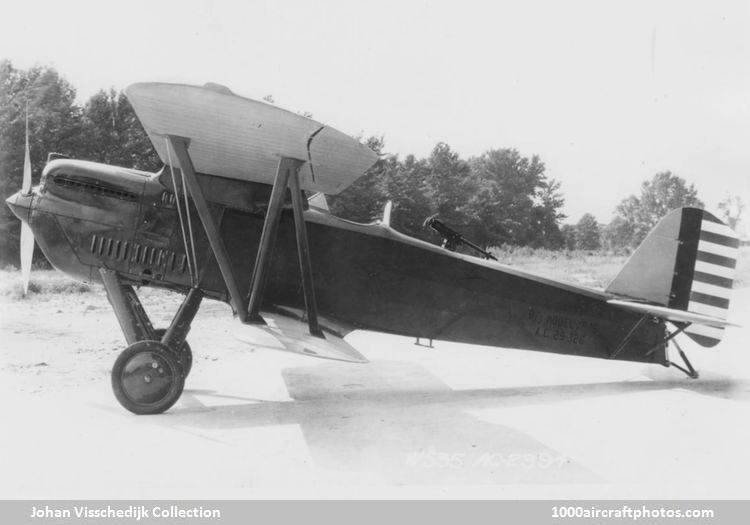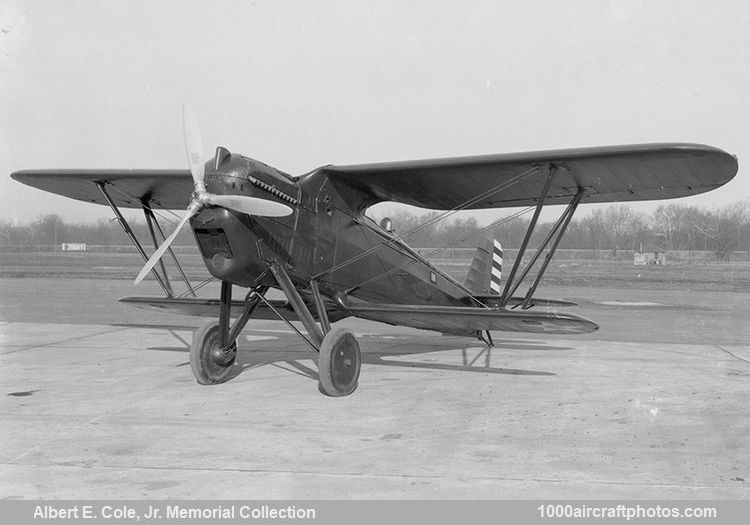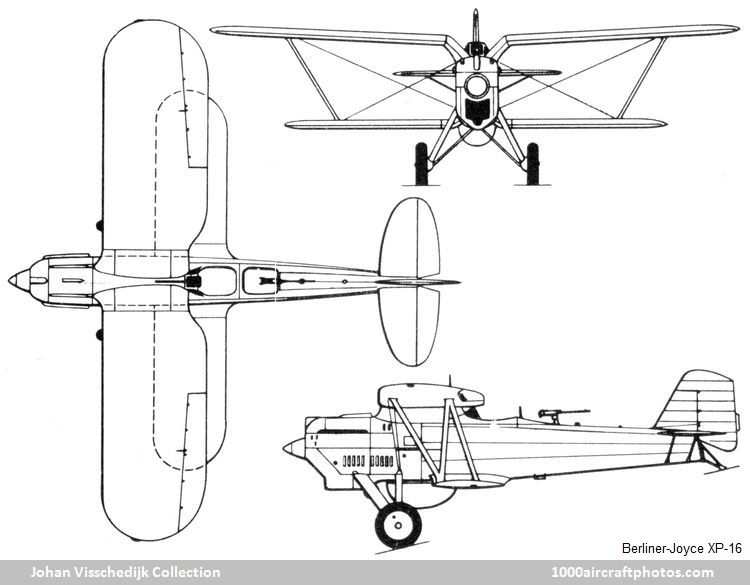02/28/2011. Remarks by
Johan Visschedijk: "The first military aircraft designed and built by the Berliner-Joyce Corporation (founded by Henry Adler Berliner and Temple Nach Joyce at Dundalk, Maryland, USA in 1929), the P-16 was a tandem two-seat fighter designed to the requirements of a USAAC contest held in April 1929. The P-16 had the distinction of being the last biplane fighter to enter service with the USAAC, and was the only two-seat biplane fighter to enter production for the Army since 1918.
(
Johan Visschedijk Collection)
The prototype XP-16, powered by a supercharged Curtiss V-1570A Conqueror twelve-cylinder liquid-cooled engine rated at 600 hp, appeared in October 1929, and was of fabric covered metal construction with an upper wing of gull configuration. Armament comprised two fixed forward-firing 0.3 in (7.62 mm) machine guns and a third weapon of similar caliber on a flexible mounting in the rear cockpit. Five 25 lb (11.3 kg) or two 122 lb (55.3 kg) bombs could be carried.
Y1P-16 (
Albert Cole Collection)
Two contracts were issued for a total of 25 service test aircraft as Y1P-16s, s/n 31-502 to 31-515, 31-597, 32-221 to 32-230. First delivery to Wright Field was on March 1, 1932, these being essentially similar to the prototype apart from having the un-supercharged V-1570-25, also producing 600 hp.
The Y1P-16s were delivered in 1932 and were later redesignated as PB-1s (pursuit-biplace). These proved to possess insufficient maneuverability to oppose single-seat fighters, offered extremely poor visibility for landing and displayed a tendency to nose over. As a consequence they were withdrawn from USAAC service on 31 January 1934."




